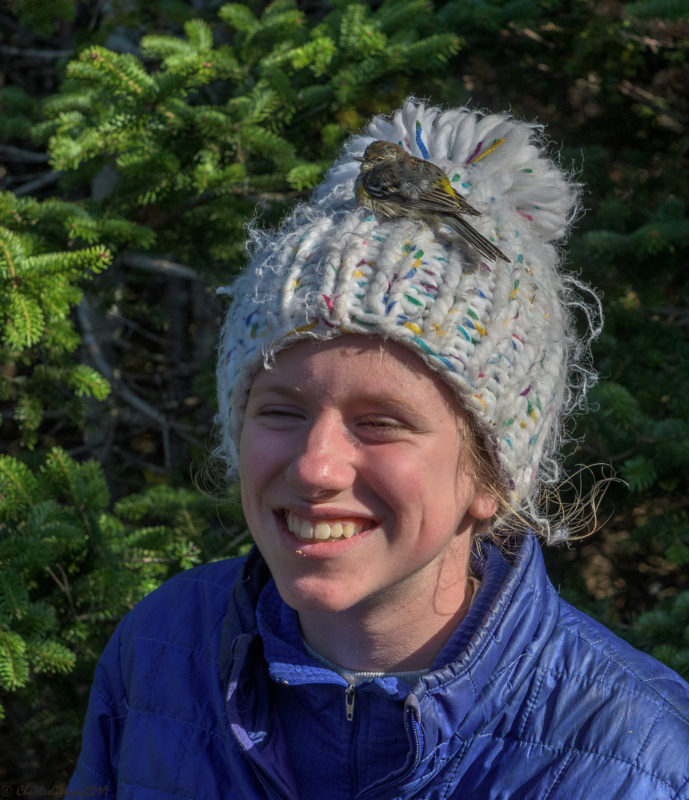
An immature Yellow-rumped (Myrtle) Warbler enjoys a brief migratory stopover on Brooke Hindinger’s knitted hat after being banded on Mt. Mansfield, 18 September 2019. © Charles Gangas
VCE’s wrap-up Mansfield banding session on 17-18 September dispelled memories of a summer in which the ridgeline was far too quiet and our nets far too often empty. In light of the recent Science article that documented sobering continentwide bird declines, we took a welcome measure of hope in our tally of 82 mist net captures. Despite most of these being passage migrants, rather than local breeders or locally fledged young, the sheer volume of activity on Mansfield’s ridgeline rekindled optimism.
As has so often been the case this season, perfect weather greeted us on Tuesday evening—still, calm, fairly warm—and we made quick work of setting up our usual 25 nets. A few of us stole 10 minutes to take in the vivid sunset from a Long Trail vantage point, after which we were busy through dusk, capturing 12 birds that included 2 hatching-year Bicknell’s Thrushes (BITH) and four warbler species (Blackpoll, Black-throated Blue, Yellow-rumped, and Black-throated Green). With day length dramatically shorter now than in June, no one complained about a relatively early “lights out” in the ski patrol hut, or sleeping in until 5 am the following morning.
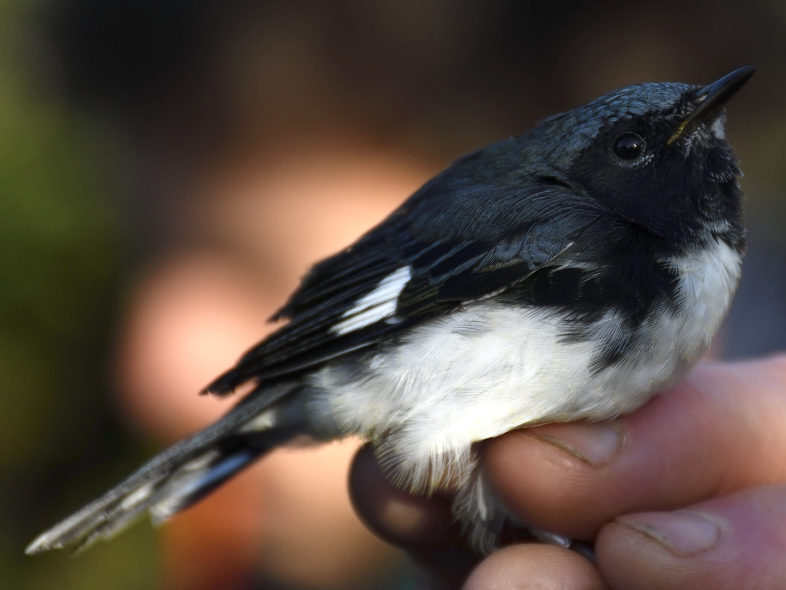
One of 12 Black-throated Blue Warblers banded by VCE on Mt. Mansfield, 17-18 September 2019. © Michael Sargent
We had nets open before first light, and though hopes of a Northern Saw-whet Owl went unfulfilled, action began early and continued through closing at 11 am. Several BITH called and sang briefly at dawn, exercising their annual mid-September resurgence of vocal activity—we caught another 8, 4 of them locally breeding males that we had captured earlier in the season. Most BITH will be long gone by 1 October, winging their way south to overwinter on one of four Greater Antillean islands (Hispaniola, Cuba, Puerto Rico and Jamaica). Other morning banding highlights included the season’s first Brown Creeper and Tennessee Warbler, plus 4 diminutive Ruby-crowned Kinglets. Numerically, Yellow-rumped (Myrtle) Warblers predominated, as they will for most of us Vermont birders during the first half of October.
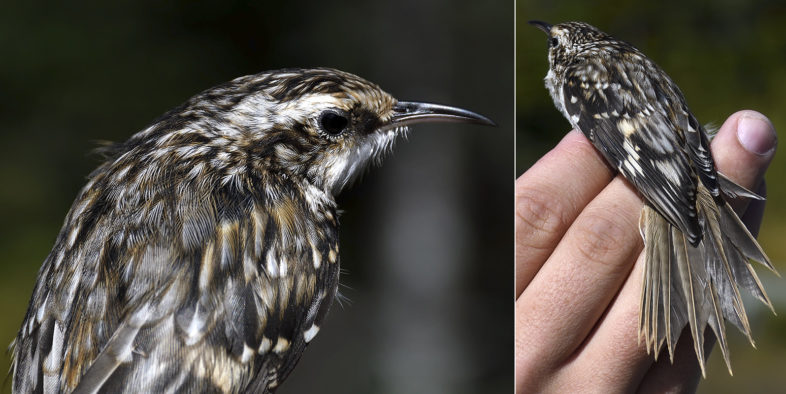
2019’s first and only mist-netted Brown Creeper, a unique species among passerines with its stiff woodpeckerlike tail, long, clasping toes, and delicately curved bill. © Michael Sargent
Over both days, our 82 captures included:
Ruby-crowned Kinglet — 4 (2 immatures, 2 adults)
Brown Creeper — 1 immature
Bicknell’s Thrush — 10 (5 immatures, 1 new adult, 4 adult male within-season recaptures [3 banded in 2018, 1 in July])
Swainson’s Thrush — 1 immature
Hermit Thrush — 1 immature
Dark-eyed Junco (Slate-colored) — 12 (11 immatures, 1 adult)
White-throated Sparrow — 6 (7 immatures, 1 adult)
Tennessee Warbler — 1 immature
Blackpoll Warbler — 11 (6 immatures, 4 adults, 1 unknown age)
Black-throated Blue Warbler — 6 (4 immatures, 2 adults)
Yellow-rumped Warbler (Myrtle) — 28 (16 immatures, 6 adults, 4 unknown age)
Black-throated Green Warbler — 1 immature
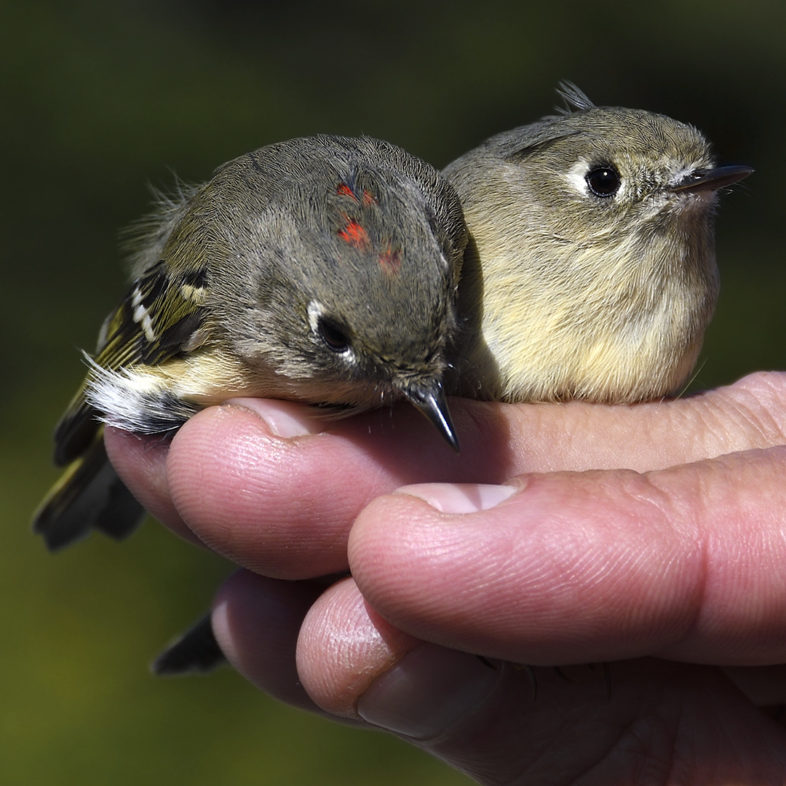
Male (left) and female (right) Ruby-crowned Kinglets—few other species could fit side-by-side in a single bander’s grip. © Michael Sargent
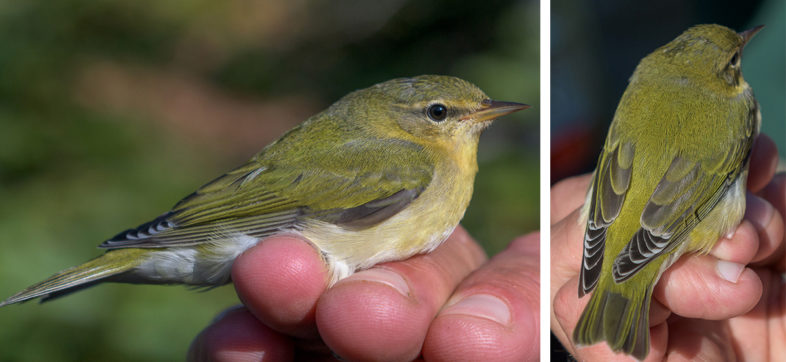
An immature Tennessee Warbler banded on the Mansfield ridgeline, 18 September 2019. Populations of this spruce budworm specialist have increased in the past 2-3 years, tracking a budworm outbreak in Quebec. © Charles Gangas
We were pleased, and relieved, to end our 2019 field season on a high note. With unrelenting grim news about trends of North American birds, and of our planet itself, we all need heartening signs to buoy spirits and refuel optimism. A single day’s banding does not an avian recovery make, but after a discouraging summer, our final session was uplifting. We’ll be back at it next June, monitoring Mansfield’s breeding bird community for a 29th consecutive year. We encourage visitors of all ages and backgrounds, so stay tuned for news of our weekly visits. In the meantime, we wish safe passage and intact overwinter habitats for the many migrants we all share and cherish.
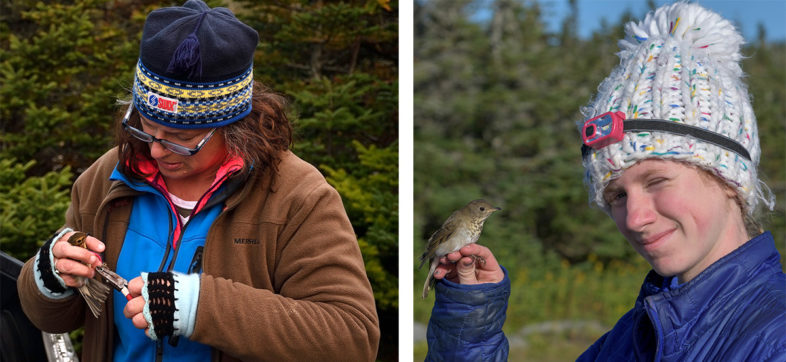
Like mother, like daughter: VCE Associate Director Susan Hindinger bands a Swainson’s Thrush, while her daughter Brooke prepares to release a banded Bicknell’s Thrush. © Michael Sargent (left), Charles Gangas (right)
